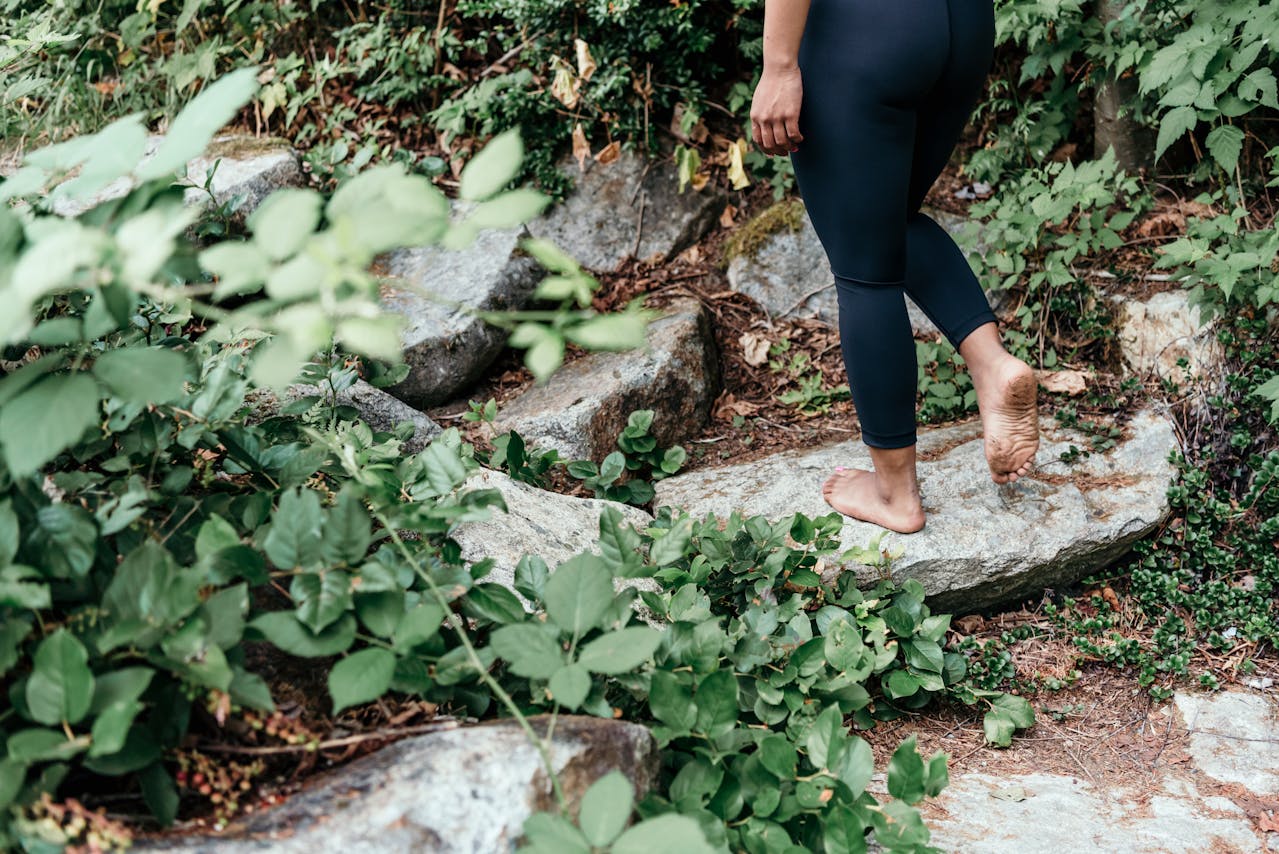
Table of Contents
Discover inner peace and mindfulness through walking meditation. This ancient practice is a powerful mindfulness meditation exercise that can provide many benefits for improving mental and physical well-being.
Walking Meditation
While many mindfulness practices involve stillness, mindful walking stands out by actively engaging the body in meditation practice and creating physical, emotional, and mental balance.
By coordinating all aspects of the self, individuals can achieve heightened awareness for enhanced control of their feelings, actions, and thoughts.
Walking meditation can help people respond mindfully to daily situations and stressors, fostering emotional resilience and a greater sense of calm.
For those who struggle sitting still during mindfulness practices, mindful walking meditation is a great alternative.
The Benefits of Walking Meditation
Frequent walking meditations offer numerous advantages for overall well-being, including physical and mental health.
- Enhances present-moment awareness
- Reduces anxiety levels
- Improves blood circulation
- Increases lung capacity
- Promotes better posture
- Boosts mood
- Enhances focus
- Encourages deeper connection with nature
- Cultivates patience
Improves Chronic Mental Health Conditions
One randomized controlled study tested walking meditation as an intervention for chronic obstructive pulmonary disease patients.
The research discovered that individuals who regularly walked for three months experienced notable enhancements in their overall quality of life and mental well-being compared to those who did not participate.
This study demonstrates the potential of walking to improve patients' physical and mental health.
Cardiovascular Benefits
Walking meditation can have many benefits for the cardiovascular system. One study tested the results of walking meditation on individuals with type-2 diabetes. The results showed significant heart rate, blood pressure, and glucose regulation improvement.
It is recommended that those who wish to reap this benefit practice mindful walking for 30 minutes a day, three times a week for 12 weeks.
Reduced Stress
Walking meditation reduces feelings of stress to calm the mind. Walking meditation can also help calm anxiety by focusing on each step and breath, grounding one in the present moment.
In one study, a group of individuals experiencing high levels of psychological distress participated in eight mindful walking sessions over four weeks. By the end of the trial, there was a dramatic reduction in physical stress symptoms and a significant increase in their quality of life.
Improved Sleep Quality
Walking meditation enhances sleep by blending physical activity with mental calmness. When practiced mindfully, focus rests on the steps and breath, reducing stress and quieting racing thoughts.
This practice helps regulate the sleep-wake cycle and releases mood-boosting endorphins. Daily mindful walks can improve sleep quality over time, promoting restful nights.
Improved Coordination
Research demonstrates that regular walking meditation improves ankle awareness and coordination to encourage balance.
With this, it can be used as an alternative form of training and exercise to improve balance, especially in the older adult population.
How to Practice Walking Meditation

Before you begin to try walking meditation, it is essential to ensure you have enough space to bring mindfulness in. Remember that if you are outdoors, you may continue walking in a single direction, while if you choose to walk inside, you will likely have to go back and forth. Here are the five simple steps to perform guided walking meditation.
- Choose a Suitable Location: Find a quiet and uninterrupted path or space, preferably in nature, where you can walk for 10 to 20 minutes without distractions. This could be a park, garden, or even a quiet hallway.
- Set an Intention: Before you start, take a moment to set an intention for your walk. This could be as simple as wanting to be present during the walk or cultivate mindfulness and awareness.
- Start Walking Exercise: Walk slowly and simply notice each step. Feel the sensations of your feet lifting off, moving through the air, and making contact with the ground. Let your steps be natural and unhurried.
- Focus on the Breath: Walk while paying attention to your breathing. Sync the rhythm of your breathing with your steps, such as taking a few steps with each in-breath and out-breath. When your mind wanders, gently bring it back to the sensation of walking and breathing. Observe any physical sensations that might arise.
- Conclude with Gratitude: Once your walking meditation is complete, stand still momentarily, taking a few deep breaths. Express gratitude for the time spent in meditation and the physical ability to walk mindfully. Slowly transition back into your day with renewed awareness and calmness, and continue to walk freely.
Frequently Asked Questions
What is the purpose of walking meditation?
Walking meditation is one of the most powerful mindfulness techniques with extensive physical and mental benefits.
It is a convenient mindfulness meditation that can become an everyday activity, making it ideal for those with busy schedules.
Further, it is recommended for experienced practitioners to practice before or after sitting meditation by effectively connecting the mind, body, and soul for complete coordination.
How fast should I walk during mindful walking?
It is not about how fast or slow you walk but what pace keeps you most present. Mind your pace, and remember it will vary from person to person.
Play around with it, and try not to focus too hard on your speed.
How long should I practice walking meditation?
You should incorporate a 10-minute walking meditation practice into your everyday routine for the best results.
One can receive the most benefits from walking meditation with regular meditation practice.
References
Shinrin-Yoku (Forest Bathing) and Nature Therapy: A State-of-the-Art Review - PMC
Mindful walking in psychologically distressed individuals: a randomized controlled trial
Disclaimer
The contents of this article are provided for informational purposes only and are not intended to substitute for professional medical advice, diagnosis, or treatment. It is always recommended to consult with a qualified healthcare provider before making any health-related changes or if you have any questions or concerns about your health. Anahana is not liable for any errors, omissions, or consequences that may occur from using the information provided.

By: Clint Johnson
Clint is the driving force and founder of Anahana. Clint teaches Yoga, Pilates, mindful breathing, and meditation, catering to a global community of students and teachers.